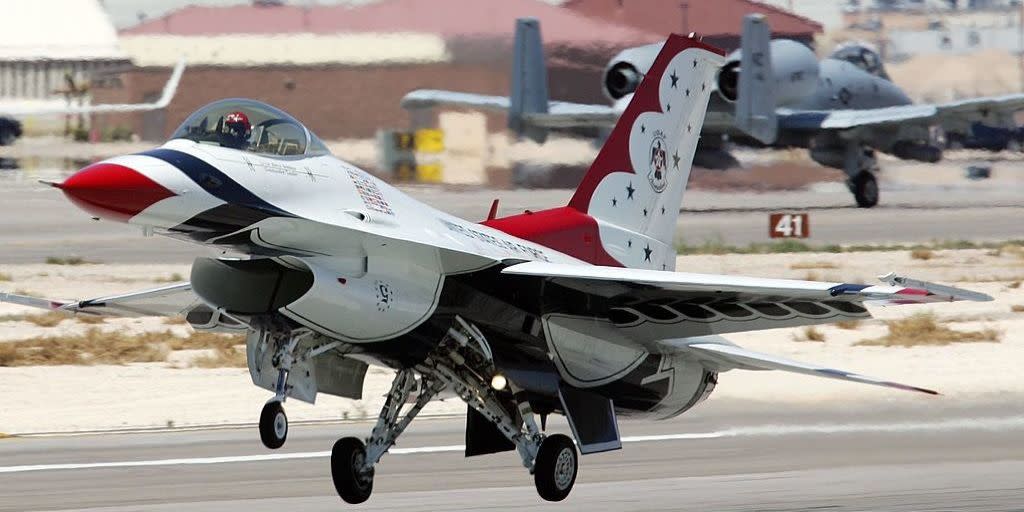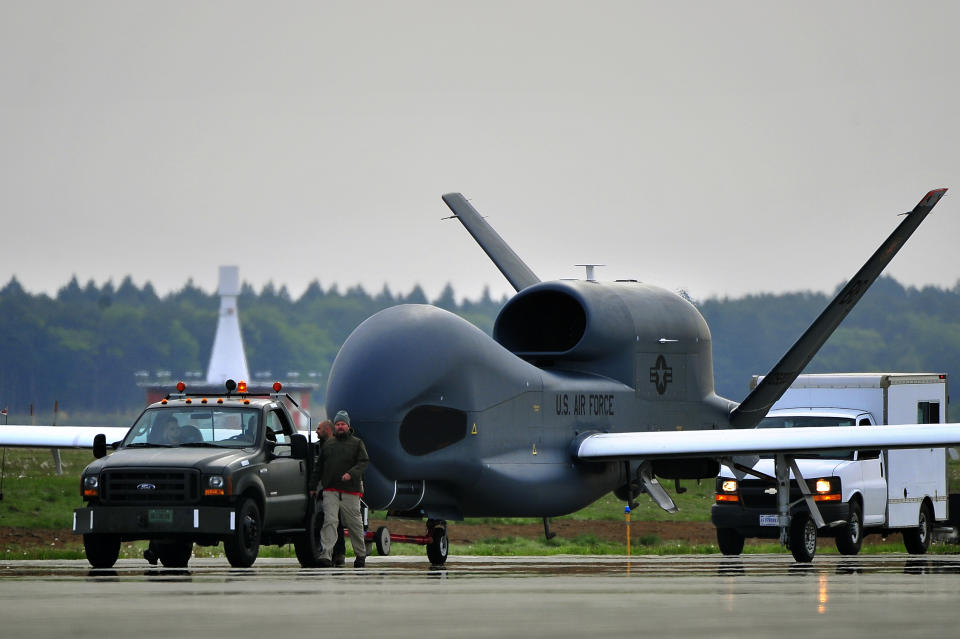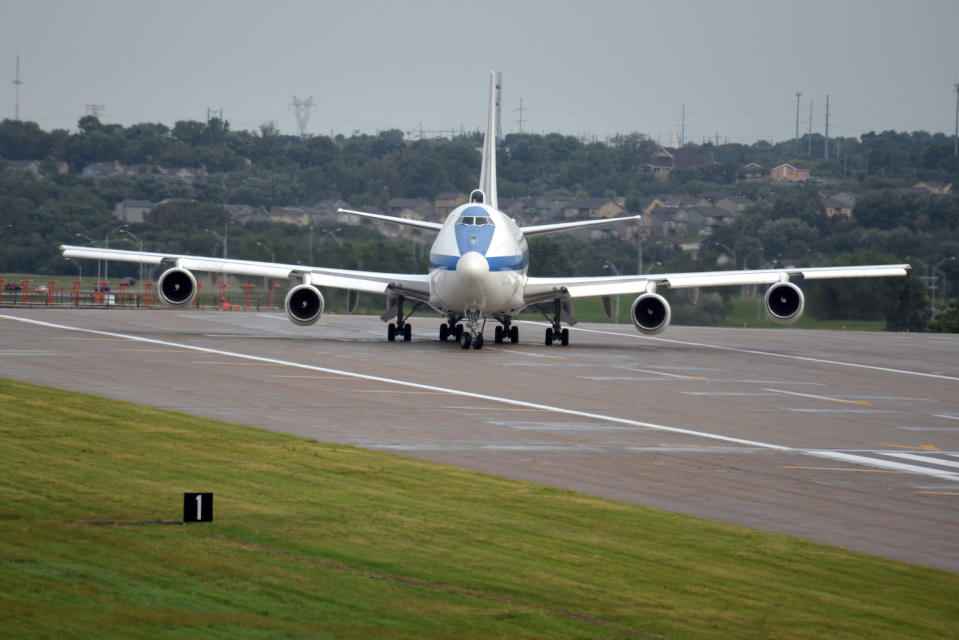The U.S. Air Force Just Had an Awful Week

A string of aircraft accidents added up to a bad week for the U.S. Air Force. Two F-16 Fighting Falcon fighters, one belonging to the prestigious Thunderbirds aerobatic team, and a giant unmanned surveillance drone were destroyed in accidents. In addition to the crashes, several intelligence-gathering aircraft and two planes meant to fight a nuclear war were damaged by a tornado. No pilots or other aircrew were lost in the incidents nor did any sustain serious injuries.
The first accident occurred on June 21st. An Oklahoma Air National Guard F-16C Block 42 fighter caught fire and crashed while taking off from Ellington Field Joint Reserve Base in Houston, Texas. The pilot ejected and was taken to a nearby hospital for evaluation. The F-16 was conducting a training mission for the North American Aerospace Defense Command (NORAD). The cause of the accident is under investigation.
The second F-16-related accident took place on June 23rd, when a F-16D Block 52 flipped upside down shortly after landing at Dayton International Airport, Ohio. The F-16 had been landing in the middle of a squall-a sudden, violent wind. The two-seat F-16 was aircraft number eight of the Air Force's Thunderbirds aerobatic demonstration team. The aircraft was conducting a familiarization flight for the Dayton Air Show. Both the pilot and a technical sergeant onboard were taken to a local hospital where they were found to be in good condition.

The third aircraft loss was also on June 21st, when an RQ-4 Global Hawk unmanned surveillance drone crashed in California's eastern Sierra Nevada mountains. Part of the Air Force's 9th Reconnaissance Wing, the drone was flying from Edwards Air Force Base home to Beale Air Force Base while being controlled by a crew on the ground in Palmdale. The aircraft, which had been visiting Edwards for repairs, went down near Mount Whitney. The Air Force now has 32 Global Hawk drones.
The fourth incident involved multiple aircraft at Offutt Air Force Base, the home of U.S. Strategic Command. A tornado touched down at the air base, damaging seven RC-135 reconnaissance aircraft. Six of the aircraft were only lightly damaged and were returned to flight duty, while the seventh plane reportedly sustained more serious damage. The Air Force's 1960s-era RC-135s are designed to scoop up and analyze electromagnetic signals broadcast by enemy forces. The aircraft are assigned to Air Combat Command.

In addition to the RC-135s, two E-4B "Nightwatch" airplanes also sustained damage. The modified 747s were parked in hangars at the time of the incident, however the planes are so large their tails were sticking out of the hangar when the tornado hit.
A militarized version of the Boeing 747-200 jumbo jet, the E-4B is designed to serve as a flying command and control hub for U.S. nuclear forces in the event of war. The E-4B is designed to embark the President of the United States, Secretary of Defense, or the Joint Chiefs of Staff and provide a secure location to command America's nuclear forces. If the United States were ever in a nuclear war, orders to launch missiles and bombers-or cease fire-would come from E-4Bs orbiting high over the country. The four E-4Bs also ferries the Secretary of Defense when he travels abroad.
The two damaged planes were part of the 595th Command and Control Group, operating under the U.S. Air Force's Global Strike Command. The remaining two undamaged planes were not at Offutt and are still operational. While this represents a loss of fifty percent of the aircraft fleet, we don't know how serious the damage is and how soon the aircraft could return to flying status.
Better luck this week, guys.
You Might Also Like

